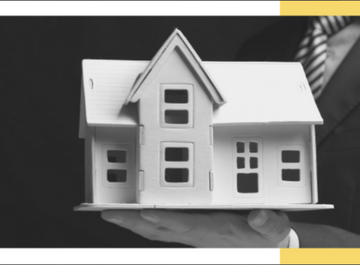
The Statec envisages "a strengthening of the economic dynamic from the second half of 2021". The Grand Duchy has thus withstood the health crisis better than its European neighbours… and is taking off again more quickly. As for real estate, which rose by 14.5% in 2020, the experts anticipate a return to more reasonable growth figures (9% in 2021 and another 5% in 2022).
First, there is the good news. Overall, the Grand Duchy has withstood the economic consequences of the health crisis better than expected and will return to healthy growth more quickly.
The latest economic report from the Statec (Institut national de la statistique et des études économiques) is clear: "Under the effects of the pandemic, economic activity in Luxembourg suffered a decline in 2020, but this does not appear to be very pronounced in European comparison…". In fact, the fall in GDP in 2020 (-1.3 points) in the country is much less than that recorded in the euro zone (-6.8%). And for the years 2021 and 2022, "the acceleration of vaccination makes it possible to envisage a significant drop in restrictions on activity and a strengthening of the economic dynamic from the second half of 2021, in combination with national and international recovery measures. Luxembourg's GDP is expected to grow by 6% in volume over the whole of 2021, followed by a 3.5% expansion in 2022," say the experts. All the indicators are green (or almost)
In detail, we note that the organisation still estimates that in 2021 the public deficit should be clearly reduced before giving way to a slight surplus in 2022, that the pandemic has had an impact on energy consumption, but that domestic production has increased and that the unemployment rate should stabilise at just over 6%…
statec
Of course, Economy Minister Franz Fayot is all smiles. For him, these good figures are proof of "the solidity of the fundamentals of the Luxembourg economy before the crisis" and of the relevance of "the panoply of support instruments implemented to support companies and their employees during the pandemic, in particular through short-time working".
The Minister believes that the choices were judicious with measures that "allowed, on the one hand, to preserve and stabilise the economic fabric during the crisis and, on the other hand, to accompany the post-crisis recovery by subsidising extraordinary investment aid for innovation in the form of new production processes, digitalisation, exceeding environmental standards, etc.
This is all very well. But what about the real estate market? Which, the Statec admits, "is one of the major concerns of citizens and of economic and social policy". Indeed, the annual price increase has been growing since 2009, reaching 14.5% in 2020! "This is enough to keep low-income households out of home ownership. And yet, prices in Luxembourg are undoubtedly among the highest in Europe…" agrees the Statec. And worse still: with the recent surge, and even the risk of shortages observed for certain materials (steel in particular), the rates and delivery times for affordable housing will also be affected…
"THE INCREASE IN 2021 WOULD BE CONTAINED WITHIN A RANGE OF 5 TO 12.5% AND THAT OF 2022 BETWEEN 1 AND 8.5%…"
A relative optimism
In this context, the forecasts of the increases of the market price that the Institute delivers are to be regarded as good news. That is to say a +9% in 2021, but a +5% in 2022 (one would be tempted to say only).
To explain this relative optimism, the Statec judges indeed that over the last years (2019 and 2020), taking into account the usual criteria which determine the selling prices (namely, in particular, the stock of housing, the prices of the grounds, the demography, the cost of the credit), the increases observed were "excessive". According to the agency, either the traditional fundamentals had been misjudged or the price surge was "the result of speculative actions or other exceptional factors".
Therefore, having modified its calculation methods somewhat, the Statec maintains its forecasts, but already warns in modest terms that a "perimeter of uncertainty remains". In other words, the increase in 2021 would be contained within a range of 5 to 12.5% and that of 2022 between 1 and 8.5%…
What if, quite simply, beyond all the factors and equations, the property market remained above all hermetic to mathematical and rational factors?



 +352 33 66 67-1
+352 33 66 67-1

